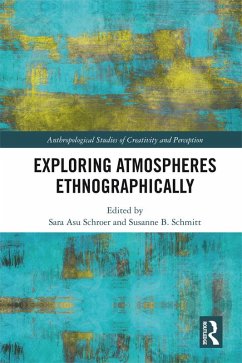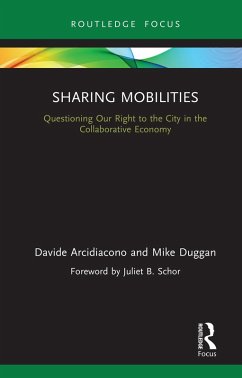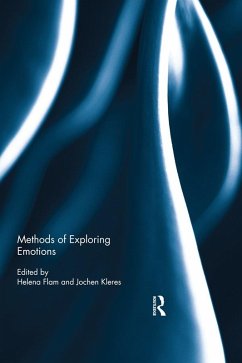
Exploring Atmospheres Ethnographically (eBook, PDF)
Versandkostenfrei!
Sofort per Download lieferbar
42,95 €
inkl. MwSt.
Weitere Ausgaben:

PAYBACK Punkte
21 °P sammeln!
The notion of atmosphere has always been part of academic discourse, but often refers to something vague and diffuse - a phenomenon connected with our affective engagement with the world that is difficult to grasp. This volume develops and refines the concept of atmosphere, seeking to render it productive for anthropological and social scientific research by bringing together a range of original ethnographic studies in combination with investigation of the use of the term in language. The chapters examine dimensions of atmosphere through topics of interdisciplinary concern, such as learning an...
The notion of atmosphere has always been part of academic discourse, but often refers to something vague and diffuse - a phenomenon connected with our affective engagement with the world that is difficult to grasp. This volume develops and refines the concept of atmosphere, seeking to render it productive for anthropological and social scientific research by bringing together a range of original ethnographic studies in combination with investigation of the use of the term in language. The chapters examine dimensions of atmosphere through topics of interdisciplinary concern, such as learning and the acquisition of skills, the experience of place, affect and mood, multi-species relations and the perception of weather and environment - whether in natural landscapes, medical and educational settings, homes or creative contexts - Exploring Atmospheres Ethnographically analyses the relational and transformational processes through which people perceive, experience and live in a moving atmospheric world. As such, it will appeal to scholars of anthropology, sociology, geography and cultural studies with interests in space and place, sensory ethnography and affect.
Dieser Download kann aus rechtlichen Gründen nur mit Rechnungsadresse in A, B, BG, CY, CZ, D, DK, EW, E, FIN, F, GR, HR, H, IRL, I, LT, L, LR, M, NL, PL, P, R, S, SLO, SK ausgeliefert werden.













